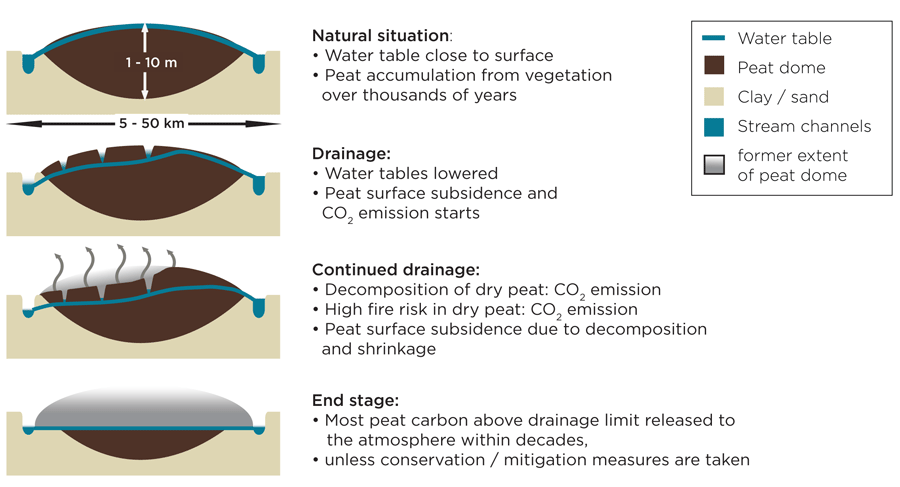Good intentions or unintended damage done?
The difficulties in managing environmental issues are plentiful. The natural world is built on complex, intrinsic ecosystems that operate in concord. Disrupting, enhancing, or removing one component, will affect all the rest. This means that every action taken in the environment, for good and for worse, has the potential to catalyze a cascade of unpredictable outcomes. This includes installing renewable technology.
A recent study conducted by Chico et al. (2020) mapped the presence of peatlands in northern Spain. Peatlands are a valuable wetland ecosystem that functions as one of the largest natural terrestrial carbon stores. As such, damage to peatlands can release almost six per cent of the global anthropogenic carbon dioxide emissions every year (IUCN, 2020). The study assessed a range of human impacts currently affecting peatlands in Spain and it found that overgrazing, drainage for agriculture, urbanization, and burning were all having an impact on the sustainability of this vulnerable ecosystem (Chico et al., 2020).
Ironically, the construction of wind farms was threatening peatlands and their ability to store carbon dioxide (Chico et al., 2020). The impacts of infrastructure, roads, and associated drainage of wind farms can have long-term, profound effects on peatlands (Wawrzyczek et al., 2018). However, wind farm construction typically occurs on these lands, because they are not viewed as economically viable (Wawrzyczek et al., 2018).
Wind farms are a vital form of renewable energy that offers an alternative to energy production responsible for releasing greenhouse gas emissions and driving human-induced climate change. Therefore, it has been suggested that their construction on peatlands is potentially redundant, as it degrades an ecosystem that naturally stores carbon, and in the process, leaches greenhouse gases into the atmosphere. It is argued that peatlands must be urgently protected from human impacts, to preserve their ability to act as carbon sinks (Chico et al., 2020).

Similarly, hydroelectricity is a clean, renewable power production aiding in the fight to combat climate change by reducing global greenhouse gases. However, the construction of hydro-power plants can have negative impacts on the surrounding ecosystems and communities. For example, the damming of reservoirs can significantly fragment river ecosystems, blocking fish migration, altering wetlands, forests, and other surrounding habitats. Dammed rivers can also inhibit water supply to floodplains downstream and indirectly impact the sustainability of other ecosystems (Von Sperling, 2012).
Ignorance is bliss? Really?
So, how can environmental management succeed if the consequences of our actions are sometimes unclear? Without a proper understanding of the complexities involved in a process, we are doomed to fail. Reasoning from first principles is a practice that analyzes the fundamental truths of a problem and creates solutions from there onwards. As without a firm grasp on the basic principles of an issue, the path is only backwards. Similarly, embedded into scientific practice is the notion of ‘proceeding with caution’. This encourages unknown questions to be researched extensively, whilst dissuades actions with any unknown consequences.
With an ever-increasing population size, it is naïve to think that human actions will not impact on the environment around us in some way, shape, or form. However, nature is far too complex, resilient, and adaptive for us to consider impacts as simple ‘good or bad’. Weighing up the risks and consequences of an action, project or development is intrinsic to proper environmental management. Additionally, creating unique and innovative ways to address greenhouse gas emissions is vital. Thrive Project provides a framework towards global sustainability, using the first principles of reasoning to spark change in society. Please visit Thrive Project for more information.